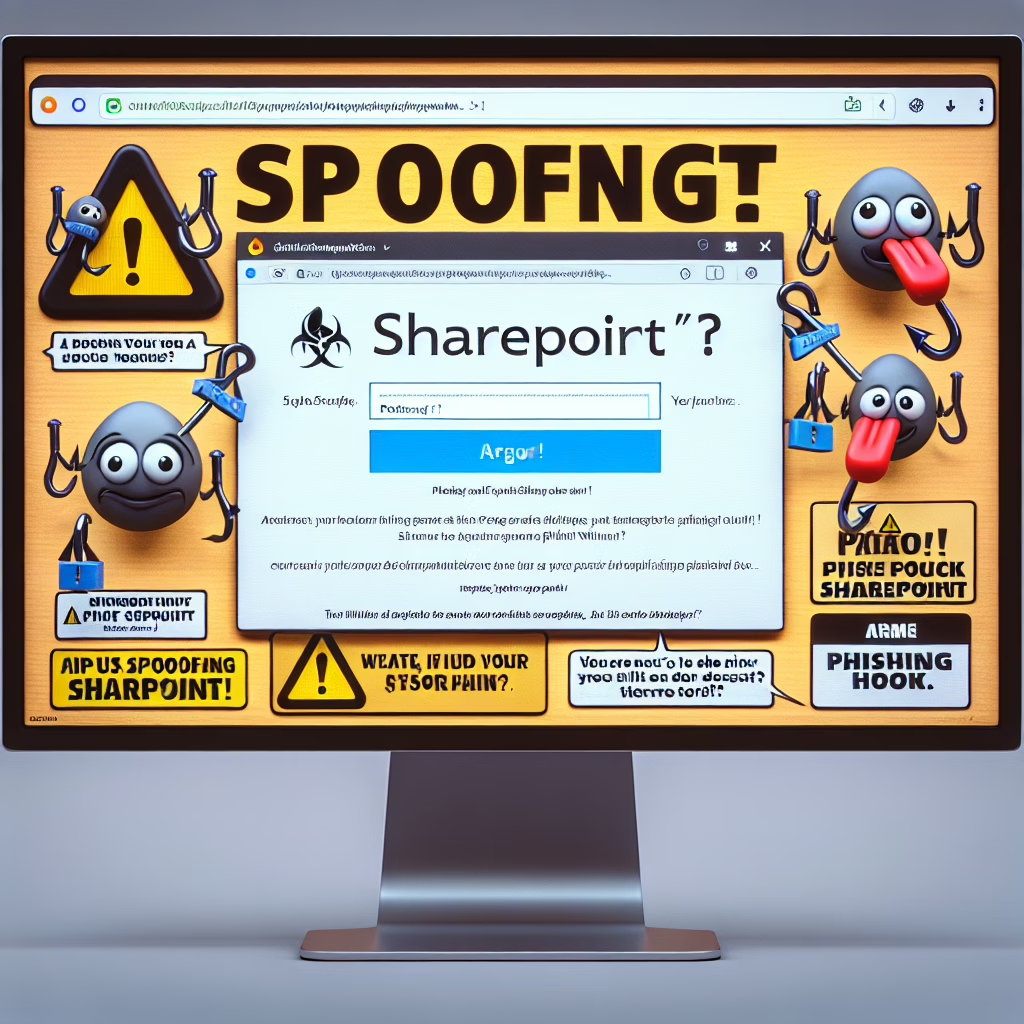In the ever-evolving world of cybersecurity, it seems that artificial intelligence (AI) has decided to join the party—albeit in a rather mischievous way! Recent events have revealed that popular AI programs are being spoofed in a phishing campaign targeting unsuspecting users of Microsoft SharePoint. Yes, folks, even your beloved cloud storage isn’t safe from the claws of cyber mischief-makers!
What’s the Deal with AI Spoofing?
AI spoofing is like that kid in class who pretends to be the teacher—except this time, it’s not just an awkward attempt at gaining popularity. Cybercriminals are employing sophisticated techniques to imitate AI programs and deceive users into revealing their login credentials. With Microsoft SharePoint being a prime target, you might want to keep your virtual doors locked!
These phishing campaigns often come disguised as legitimate emails or messages that mimic official communications. So, if you receive a message urging you to verify your SharePoint login details by clicking on a link, take a moment to pause. Would you trust an email from your future self asking for your credit card number? Didn’t think so!
Spotting the Phishing Hooks
Now, you may wonder how on earth you can spot these sneaky phishing attempts. Here’s where your detective skills come into play:
- Look for odd email addresses: If it looks like something out of a sci-fi movie, it probably is! Legitimate emails from Microsoft won’t come from random characters and numbers.
- Examine the language: If the email contains more typos than a toddler’s first attempt at writing, be suspicious. Real companies have editors.
- Check the links: Hover over any links before clicking. If it doesn’t lead to a Microsoft domain, run away faster than you would from a rabid squirrel!
Microsoft SharePoint: The Target
Microsoft SharePoint is like the Swiss Army knife of collaboration tools, making it an attractive target for cybercriminals. It enables teams to work together seamlessly—unless, of course, someone falls victim to a phishing attack!
The sad truth is that many employees might not recognize phishing attempts until it’s too late. This is where training comes into play. A well-informed team can spot these scams faster than you can say “malware”!
Your Shield Against Phishing Attacks
So how do we fortify our defenses against these pesky phishing campaigns? Here are some proactive steps:
- Enable Multi-Factor Authentication (MFA): This is like having a double lock on your door—sure, it takes an extra step to get in, but it’s worth it when you consider the potential consequences of being hacked.
- Regularly Update Passwords: Change those passwords like they’re going out of style! Ideally, every few months, switch them up and make them complex. Think less “password123” and more “R3dF1sh@D4ce!”
- Educate Your Team: Organize training sessions on recognizing phishing attempts. A little knowledge goes a long way in safeguarding sensitive information.
The Bright Side of AI in Cybersecurity
You might be wondering if there’s a silver lining in all this doom and gloom about AI spoofing and phishing campaigns. The answer is yes! In fact, AI can also play a crucial role in combating these threats.
Advanced AI algorithms can analyze user behavior and detect unusual activity on accounts. This means that while some AIs are busy impersonating real ones for nefarious purposes, others are working hard behind the scenes to keep us safe. Talk about an AI showdown!
Your Call to Action!
As we navigate this digital landscape filled with potential threats, remember that staying informed is your best defense against cybercrime. Keep an eye out for suspicious emails related to Microsoft SharePoint or any other platform you use.
If you’ve encountered any phishing attempts or have tips on how to stay safe online, we’d love to hear your thoughts! Share your experiences in the comments below.
A special thank you to TechRadar for providing insightful information that inspired this article!

